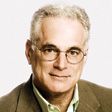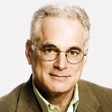A Midyear Resolution for Your Personal Finances
Don’t despair if you're behind on saving. We've got three ideas for reviving your New Year's vows.

By now many a 2011 New Year's resolution about money has faltered. But here’s a summer sizzler that can help put more money in your pocket.
Millions of Americans are struggling to save more. The worst job market since the 1930s has convinced us that we need to shore up our personal financial safety net. Yet it’s hard to consume less and save more, especially when “summer’s here and the time is right for dancin' in the street” (to quote the Motown song). Vacation? Fat chance.
Consider these three critical, underappreciated factors: time, automation, and incentives.
From just $107.88 $24.99 for Kiplinger Personal Finance
Become a smarter, better informed investor. Subscribe from just $107.88 $24.99, plus get up to 4 Special Issues

Sign up for Kiplinger’s Free Newsletters
Profit and prosper with the best of expert advice on investing, taxes, retirement, personal finance and more - straight to your e-mail.
Profit and prosper with the best of expert advice - straight to your e-mail.
There’s no magic budget app or 12-step program that makes it easy to save. But that doesn’t mean nothing works. “Finding that balance between saving and spending is the art of life,” says Meir Statman, finance professor at Santa Clara University and author of What Investors Really Want: Discover What Drives Investor Behavior and Make Smarter Financial Decisions.
First, cut yourself some slack. Sure, most savers rue times when they splurged at the mall, the amusement park or the car sales lot. But the real reason your finances remain under pressure is that household incomes after adjusting for inflation have barely improved in recent decades. We’re living through a Great Income Stagnation.
And most people don’t expect their employer to boost their pay package anytime soon. At the same time, some of the things we truly value, such as our children’s education and our family’s health, have become more expensive, For instance, since 1980 median household income is up about 13% (in 2009 dollars) while college tuition and fees at a public 4-year university are 3.6 times as high as they were in 1980-81. That’s a financial squeeze.
You’re largely on your own when it comes to everyday savings, such as an emergency fund. U.S policymakers over the past several decades have passed plenty of legislation to make it easier to borrow (think payday lenders in low-income neighborhoods) and gamble (state lotteries and Powerball) while devoting relatively little effort to supporting savings for everyday living.
That isn’t the case in high-savings countries. In Germany, savings banks and postal savings banks offer above-market interest rates on student and small-saver accounts, according to Sheldon Garon, historian at Princeton University and author of the forthcoming Beyond Our Means: Why America Spends While the World Saves. The household savings rate in Germany in 2010 was 11.4% vs. 5.8% in the U.S., according to the Organization for Economic Cooperation and Development.
Considering the brutal combination of a miserable economy and few institutional incentives to save (including a fraction of a percentage point yield on savings accounts) it's remarkable how much financial progress families in the U.S. have made. The household financial obligations ratio has declined from an all-time peak of 18.9% in the third quarter of 2007 to 16.4% in the first quarter of 2011.
The ratio remains high, but it’s heartening that it’s more than a percentage point below its average level since 1980, according to James W. Paulsen, chief investment strategist at Wells Capital Management. (The household debt service ratio is an estimate of the ratio of debt payments to disposable personal income; the financial obligations ratio adds in automobile lease payments, rental payments on tenant-occupied property, homeowners' insurance, and property tax payments.) The personal savings rate at 5% in May, 2011 hovers around a 20-year high. It's well above its low of 0.8% reached in April 2005.
Still, most of us want to and should do better. Here’s where time comes into play. The demands on our time are daunting. You work hard for your money -- and long hours. The median-income two-parent family in 2009 worked 3,500 hours or 9.6 hours a day, on average, compared with 2,800 hours or 7.7 hours in 1975, according to calculations by the Brookings Institution.
On top of that work commitment, you’re supposed to raise a family, keep up with the latest technologies, volunteer in the community, engage as a citizen, and manage a retirement savings plan. You’re also supposed to eat a healthy diet, get regular exercise, and find time for family vacations? I could go on, but you get the point.
Time is a scarce commodity these days. The only way to succeed at saving more is by making it a priority. Push other worthwhile goals aside for the moment.
We use various mental tricks to save, such as leaving the credit card at home in the freezer, paying for everyday expenses with cash, and steering clear of expensive restaurants. We set up budgets by using Quicken, Mint.com, or a simple notebook. Yet the simplest, most effective way to turn your savings priority into reality is to automate your savings. Anyone participating in an employer-sponsored retirement savings plan, such as a 401(k), 403(b) or 457 plan, has the money automatically taken out of every paycheck.
You don’t even think of spending it because it’s gone before your paycheck reaches your checking account. You can do the same thing with your checking account, whether it’s $10, $25, $50, or $100 every month. The money won’t look like much at first, but it will grow over time.
Economists are right: Incentives matter. One of my favorite personal finance illustrations of this comes from Peter Orszag, economist and former director the White House’s Office of Management and Budget under President Obama. He’s a marathon runner and to keep motivated he built a financial penalty into his training regimen.
“If I didn’t achieve what I wanted to, a very large contribution would automatically come out of my credit card and go to a charity that I very much didn’t support,” Orszag said in a recent public radio interview. “So that was a very strong motivation, as I was running through mile 15 or 16 or whatever it was, to remind myself that I really didn’t want to give the satisfaction to that charity for the contribution.”
Professional economists are probably more sensitive to financial incentives than the average person. An alternative to a money penalty is talking about what you’re trying to do. We don’t like to let our friends down and they’ll offer encouragement when you give them periodic updates.
When it comes to savings, the goal is to make it a habit. Once you’re routinely setting aside 10%, 15%, or 20% of your gross income between your taxable accounts and your retirement accounts, you’ve succeeded. You can then go on to your next midyear resolution. (I’m still working on exercise.)
Profit and prosper with the best of Kiplinger's advice on investing, taxes, retirement, personal finance and much more. Delivered daily. Enter your email in the box and click Sign Me Up.

-
 The Best Vanguard Bond Funds to Buy
The Best Vanguard Bond Funds to BuyInvestors seeking the best Vanguard bond funds can pick between mutual funds and ETFs spanning maturities, credit qualities, tax treatment and geographies.
-
 Are You Afraid of an IRS Audit? 8 Ways to Beat Tax Audit Anxiety
Are You Afraid of an IRS Audit? 8 Ways to Beat Tax Audit AnxietyTax Season Tax audit anxiety is like a wild beast. Here’s how you can help tame it.
-
 The Kiplinger Letter's 10 Forecasts for 2026
The Kiplinger Letter's 10 Forecasts for 2026The Kiplinger Letter Here are some of the biggest events and trends in economics, politics and tech that will shape the new year.
-
The Downside of a Declining Federal Deficit
Economic Forecasts With tax revenues on the rise and spending growth reined in by the sequester, Congress isn't interested in real fixes.
-
Investing Lessons from the Great Recession
investing It's not that the rules changed. It's more that strategies for long-term growth have always been riskier than we like to think.
-
Your Job Should Drive Your Savings Plan
Investor Psychology Focus on your income prospects first. That will inform your investment strategy best.
-
Save the Savings Bond
investing They helped nurture sound money habits for the World War II generation, and they can help the next generation, if Uncle Sam would only listen.
-
The Good News on Social Security
retirement All that’s needed are some nips and tucks to get the supplemental retirement program on a sounder financial path. The tougher problems are with Medicare and Medicaid.
-
The Future of Personal Finance
savings As the U.S. population ages and globalization creates more competition for money-management services, information technology will get smarter, too. But can tech help hedge your risks in investing and retirement planning?